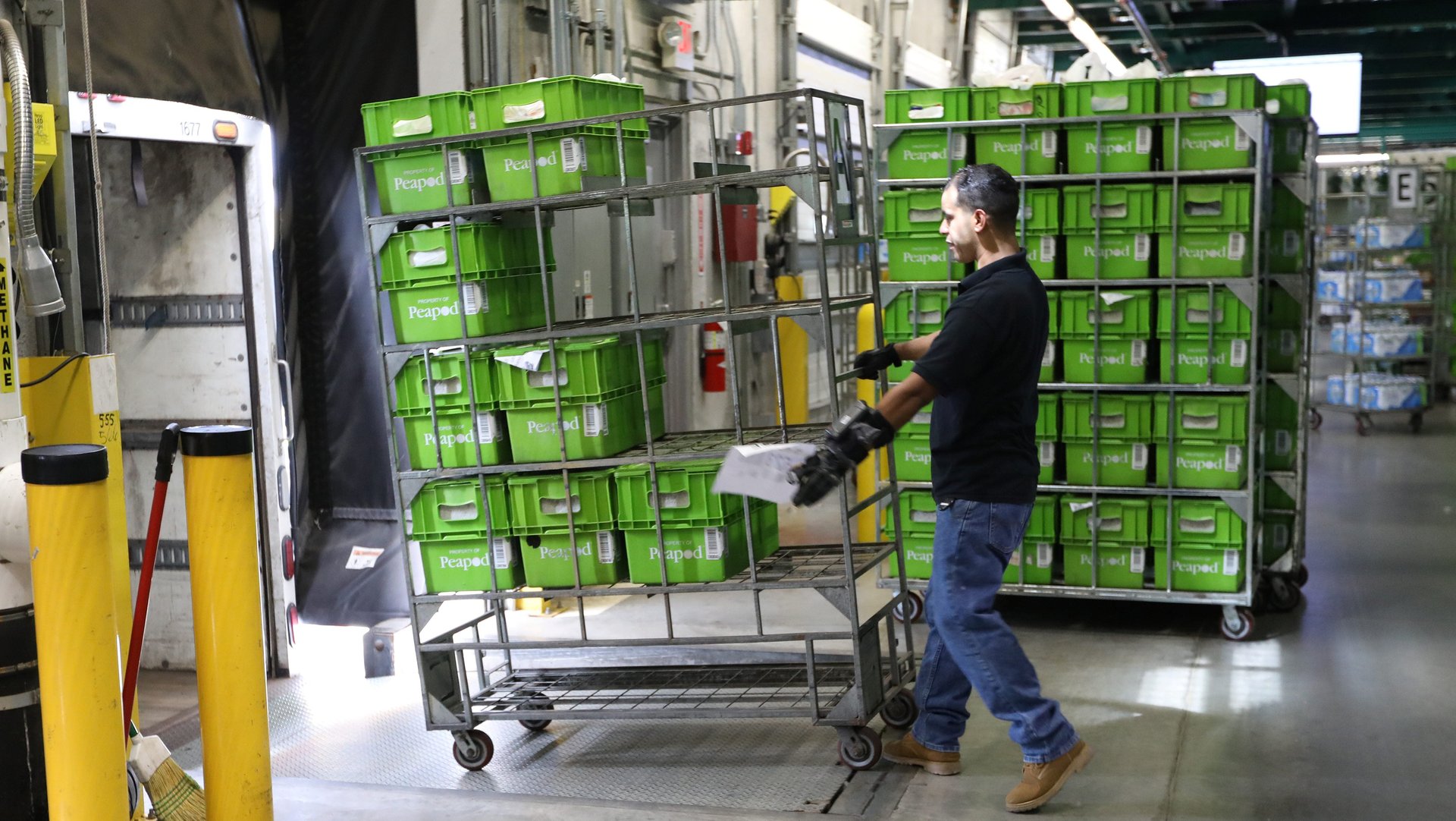How much should grocery delivery really cost?
As the pandemic drives shoppers around the world to order groceries online, the cost of delivery is being sorted out.


As the pandemic drives shoppers around the world to order groceries online, the cost of delivery is being sorted out.
Stores and delivery services are trying to find the delicate balance between what they need to charge to cover their costs, and how much customers are willing to pay before deciding to go inside a supermarket to get groceries.
The fees vary from store-to-store and include factors like discounts for first-time orders, fees for minimum orders, and promotions. Instacart, a grocery delivery startup, charges $3.99 for same-day orders of $35 or more. Members pay $9.99 per month or $99 a year for otherwise free delivery. Gorillas, a Berlin-based grocery delivery service which promises to deliver goods in 10 minutes and whose fees are subsidized by its venture capital-backers, charges $1.80 for no minimum order size. Kroger, the supermarket chain, will deliver groceries in about an hour for $9.95. Meanwhile, Walmart delivery fees range from $7.95 to $9.95 for a $35 minimum order, while members pay a $12.95 monthly fee for free delivery.
The grocery business, which traditionally runs on thin margins and is reluctant to invest in new technologies, was forced by the pandemic to scale up its delivery operations quickly, says Stephen Caine, a partner who focuses on consumer pricing at Bain, a consulting firm. As grocery shoppers grew comfortable with the new technology, they found they liked it, he said.
Now, grocers are figuring out how to not lose those customers they gained. Their margins, though, get thinner when the infrastructure costs that come with delivery, such as technology and labor, are added. So supermarkets are investing more in automation and robotics to help bring costs down, says Caine.
For grocery delivery to be profitable in the long run, delivery fees will likely have to be raised—and industry experts see delivery fees between $5 to $10 per order as the norm in the future.
The disconnect between what customers expect to pay versus the actual cost
There is a disconnect between what customers expect to pay and what grocers are charging. While the median fee for US grocery delivery is $5, most grocery shoppers expect it to cost more, and say they will pay a premium for faster delivery. For instance, when it comes to less-than-two-hour delivery, shoppers expect to pay a range of $7 to $11.60; for next day, its $5.20 to $10, according to a Bain survey from May.
The gap suggests customers recognize the cost to the service and how much they value convenience, says Caine.
The pandemic has also brought awareness to customers’ place in the supply chain, as they wait for the item to be delivered to their door. That awareness makes this the “golden opportunity” for grocers to raise fees, especially as people have gotten more aware of the working conditions of those who are delivering and packing, says Rod Sides, who leads US retail for Deloitte.
When can we expect grocery fees to go up?
Grocers have been slow to increase prices for several reasons. For one, there’s various players competing for market share, so they’re offering discounts to attract shoppers. Grocers have also built trust with their customers and don’t want to lose that, says Caine.
🎧 For more intel on global food trends, listen to the Quartz Obsession podcast episode on fish sticks. Or subscribe via: Apple Podcasts | Spotify | Google | Stitcher.
But times are changing. Recently, Amazon announced it is adding a $9.95 surcharge to Whole Food delivery orders later this month, saying it will help cover the expense of running the service. The move could influence other supermarkets to bump up prices, according to Sides.
Once customers accept there’s a fee, they usually stick with it, he says. More broadly, customers are getting used to paying for convenience, which has driven the success of services like Amazon Prime. As people get used to staying at home, they’re increasingly comfortable with paying not to leave.